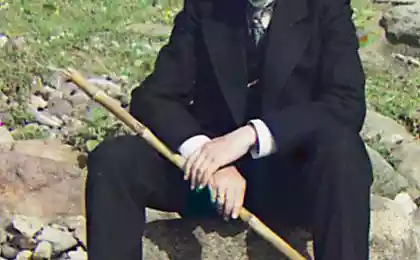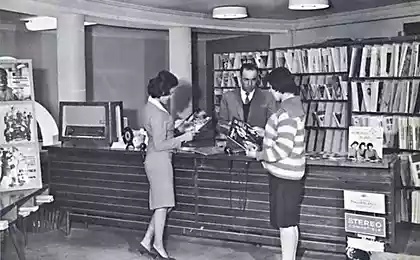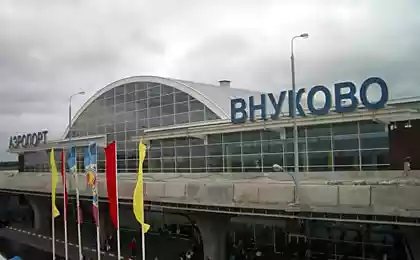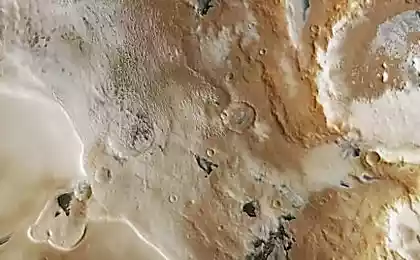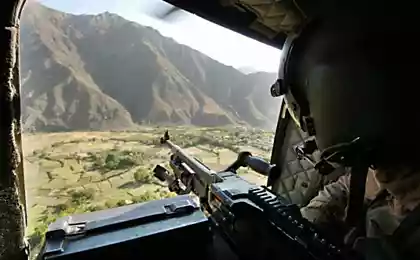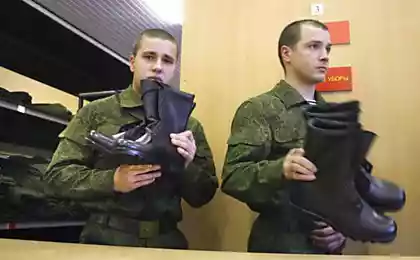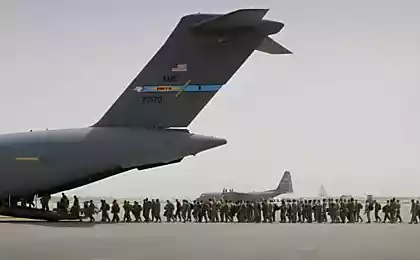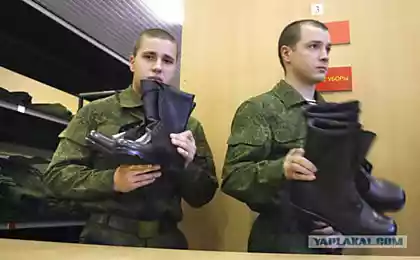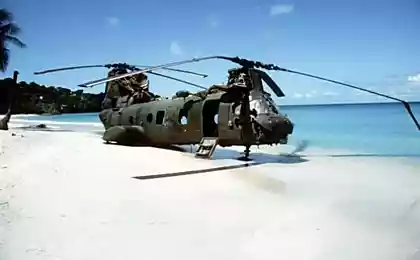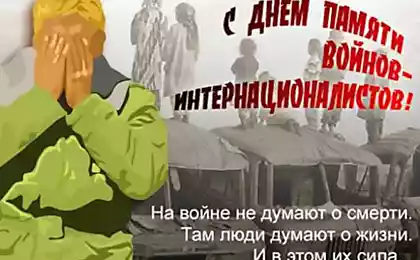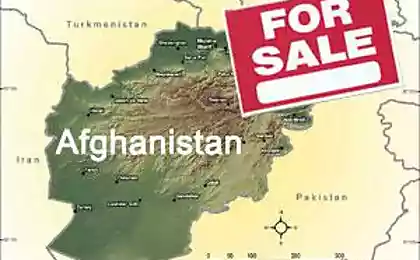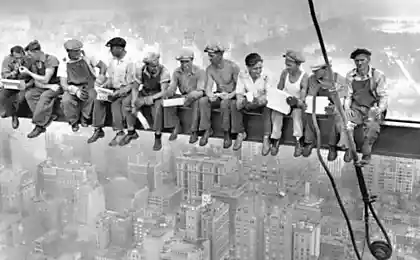1866
Afghanistan, 60 in color photos (36 photos)
In 1967, Dr. William Podlish took a two-year leave of absence from the University of Arizona and left with his wife Margaret and their two daughters, Peg and Jan, to Afghanistan, where he taught at the Higher Pedagogical School in Kabul. Sisters Podlish studied at the American International School in Kabul, where the children were educated Americans and other foreigners living or working in the country. In addition to the scientific work, Podlish William was an avid amateur photographer. In his pictures taken in 1967-68, see the stark contrast between the calm, prosperous, and that Afghanistan, which we see today, after almost forty years of war.
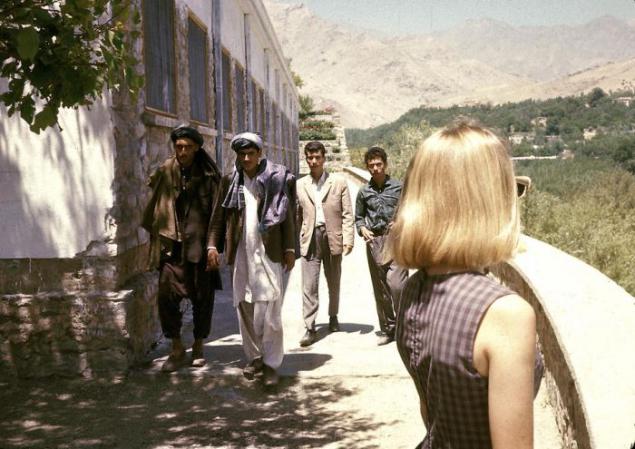
«I grew up in Thimphu, Arizona, and when he offered me and my younger sister Yan to go with him and his mother in Afghanistan, I was very glad of this opportunity. I wanted to spend the last year of high school in some exotic country, but not TIMP ... of course, a lot of cultural differences between Afghanistan and Arizona, but it was very entertaining and interesting. People have always seemed friendly and welcoming. "- Peg Podlish (on the top of the photo - on the right)
Roads in the gorge between Kabul and Jalalabad
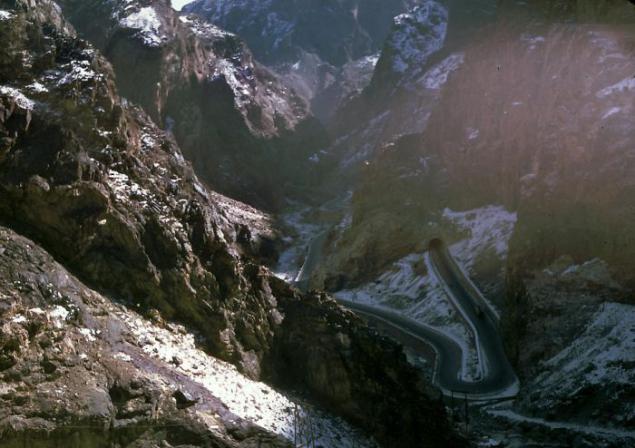
"In the spring of 1968 my family traveled to intercity buses through the Khyber Pass in Pakistan (Peshawar and Lahore). The road was very bumpy. As I recall, there were a few harrowing moments of a steep slope on one side, and the overhanging cliffs on the other. Before we left Kabul, my father paid the money to the young man, to bless our bus and take away the evil eye. I think it worked - we had a safe trip. "- Peg Podlish
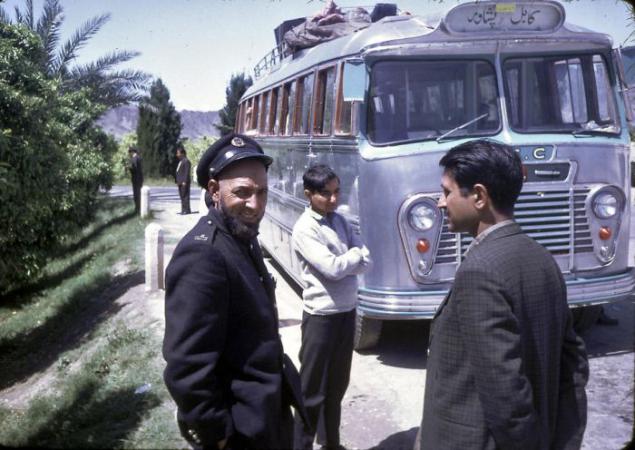
Peg Podlish in the foreground wearing sunglasses during a family trip to Pakistan
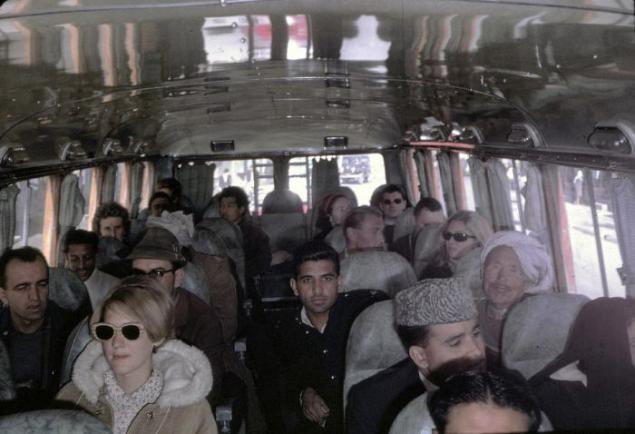
Guard duty at the royal palace in Kabul

Afghan girls on the way home from school. "Afghan girls as boys enrolled in secondary school. Although they wore uniforms, girls were not allowed to wear the chador (veil) on the way to school. Capable girls continued to college as well as men. "- Peg Podlish
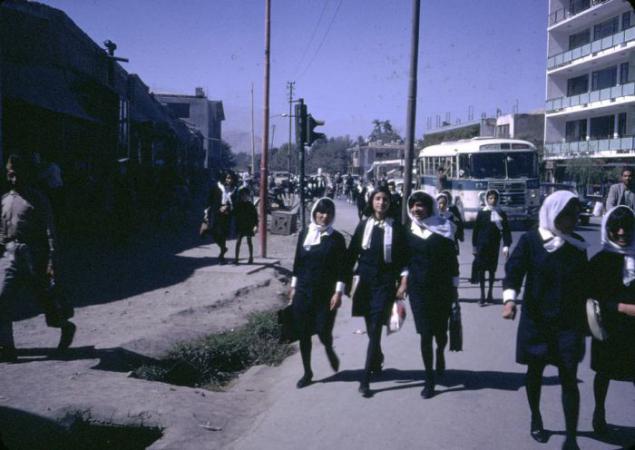
Gas station
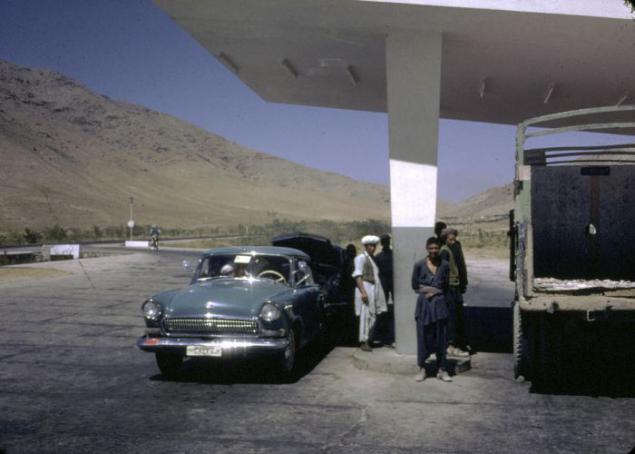
The tunnel "Salang" built by Soviet specialists in the years 1958-64 through the Salang Pass in the Hindu Kush - a link between the northern and southern Afghanistan. The length of the tunnel 2.67 km, the width of the carriageway 6m. Altitude 3400m. During the Afghan war, there were two cases of mass death of Soviet troops in the tunnel. 23 February 1980 16 people were poisoned by exhaust fumes during a stop of the column due to an accident. Another even bigger tragedy occurred November 3, 1982, when a tanker explosion killed more than 176 people. In 1997 he was blown up on orders from Ahmad Shah Massoud, to prevent the advancement of the Taliban in the north. Restored in 2002
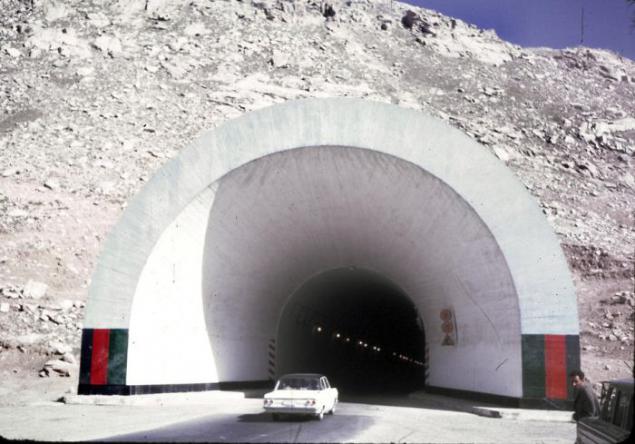
Jan and Peg Podlish in the gardens of Paghman, which were destroyed during the war before the US invasion of Afghanistan in 2001.

Royal Hill in the gardens of Paghman. "If you look at photos of the destroyed Europe after the Second World War, and compare them with what you see now, or with pre-war times, it can feel something like that, looking at these pictures Afghanistan 1960s. Then Afghanistan was the land of the world. You will see it and its inhabitants as they have been and could be. It is important to realize that we have more in common with people from neighboring countries than what divides us. "- Peg Podlish
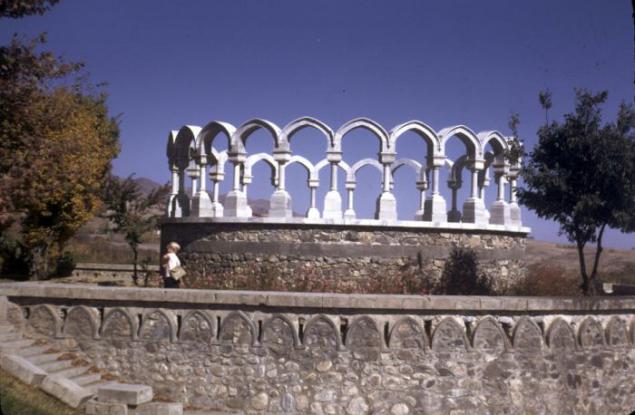
Young Afghans
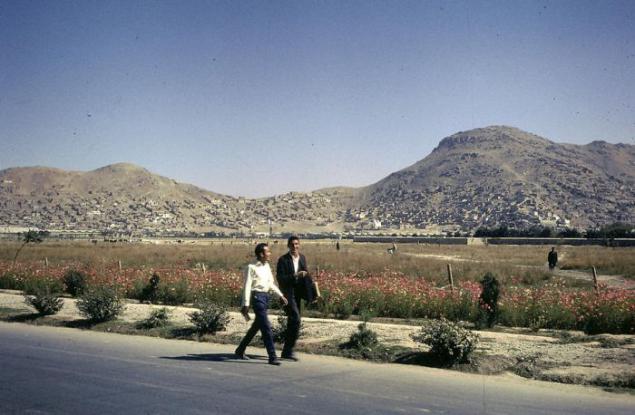
Town hillside in Kabul. "During a year in Kabul, we lived in Shari-Nau. In the 1940s, my parents lived in Denver, Colorado. My mother said that Kabul is a bit like her Denver: Located at an altitude of about a mile, sunny weather, beautiful mountains. I reminded Kabul Arizona arid landscape and lack of rain. Since I was born in Arizona, it was very easy to get used to the harsh beauty of the landscape of Afghanistan. "- Peg Podlish

A group of young Afghans drinking tea with music
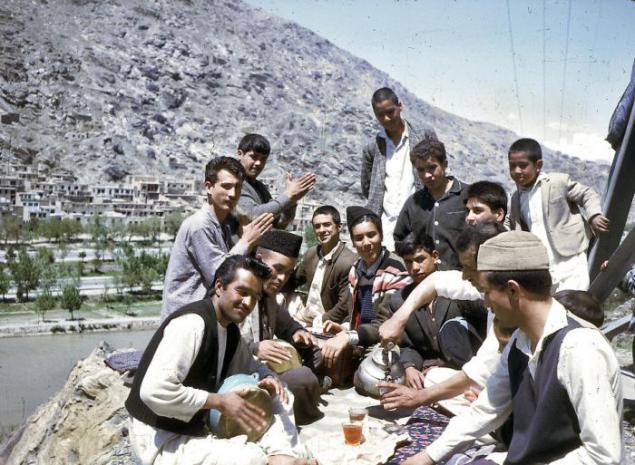
Traffic jam
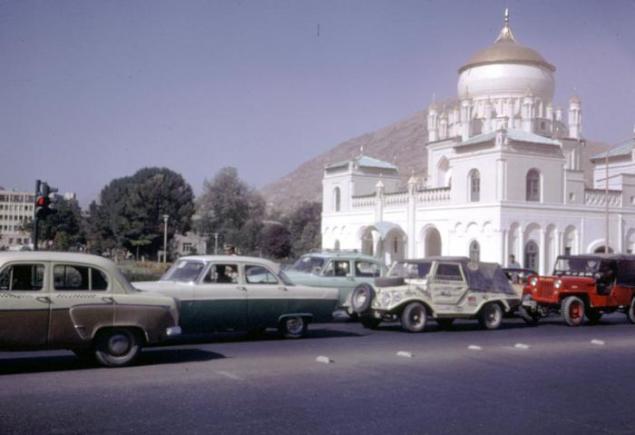
The Afghans and Americans
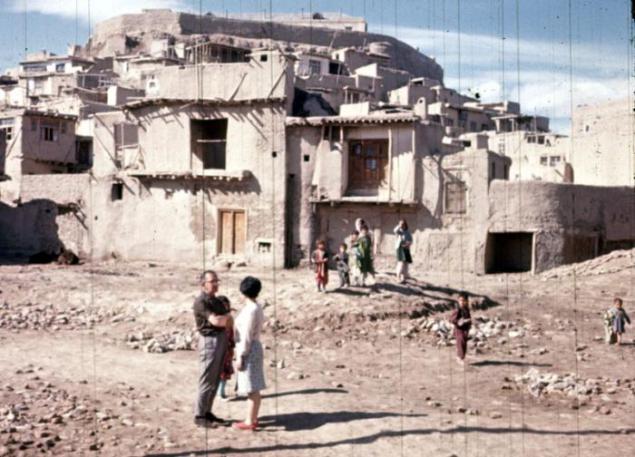
Government motorcade
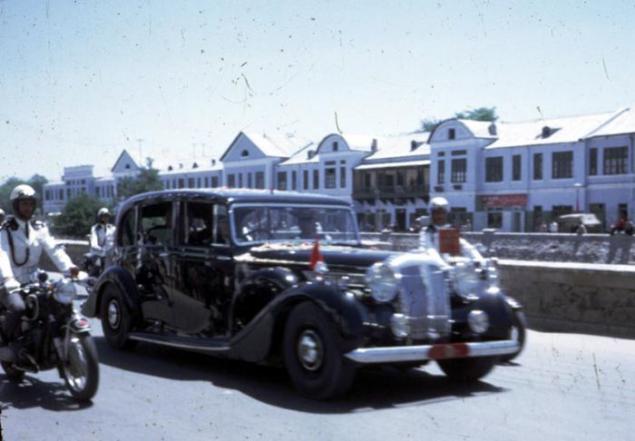
An Afghan man prepares dessert Dzhelabi

Afghan children
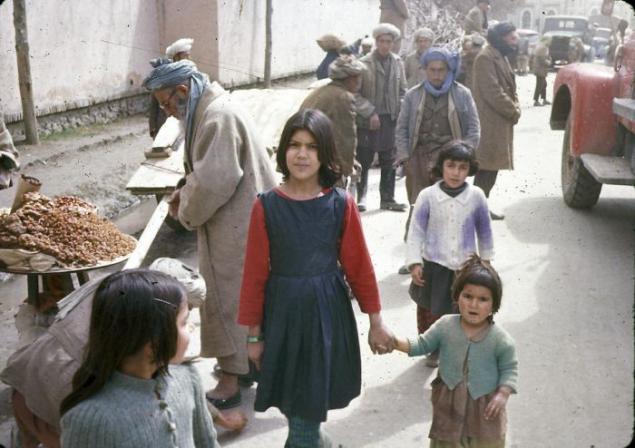
Chemistry lesson at school
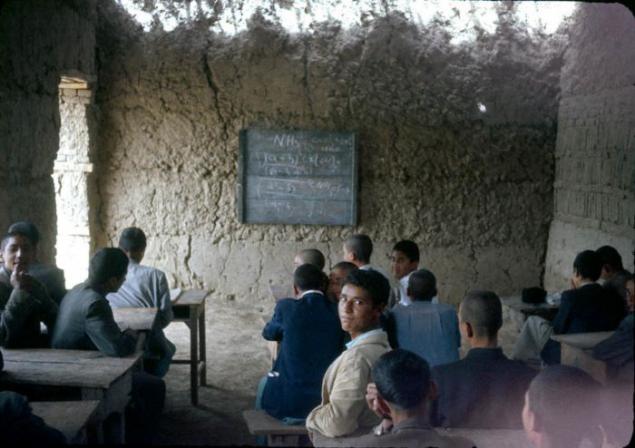
Parking near the American International School in Kabul. "Schools no longer exists, but its graduates remain in touch through Facebook and meet once a few years in various US cities. The next meeting will be held in Boston this year. Last time school let out his disciples in 1979, before she had a 20-year history. The school was located on the same site, which is now the American University of Afghanistan - in the Darul Aman Rd in the west of Kabul. In 1967-68 the American International School enrollment of about 250 students. "- Peg Podlish
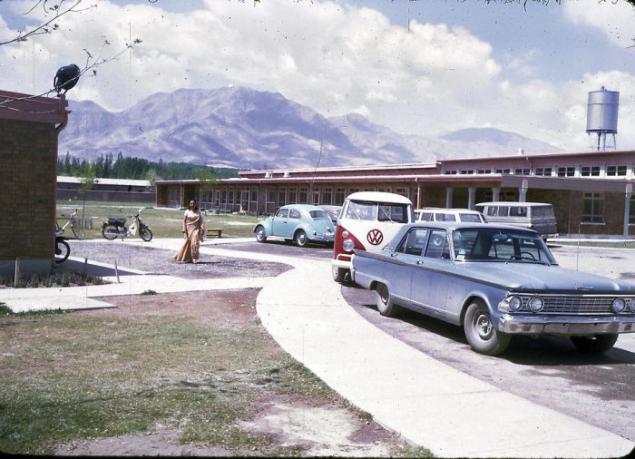
Masjid-e-Shah in Kabul to Shamshir.
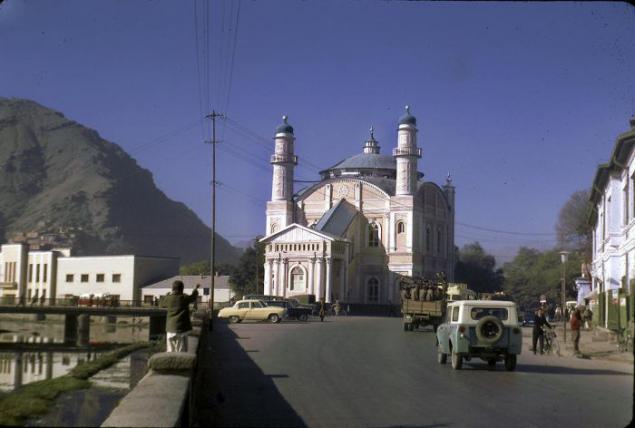
Road repair
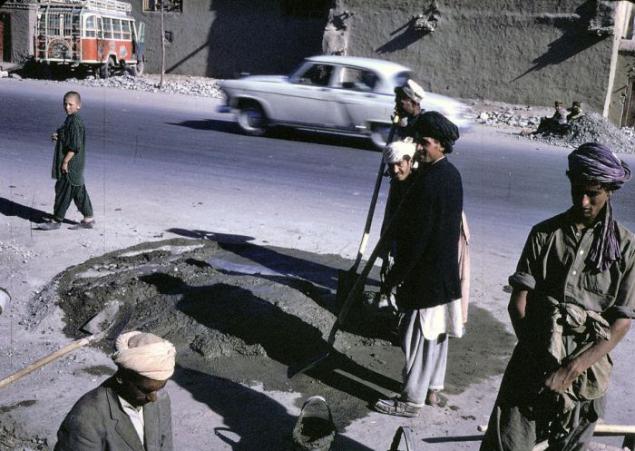
A military parade in Kabul
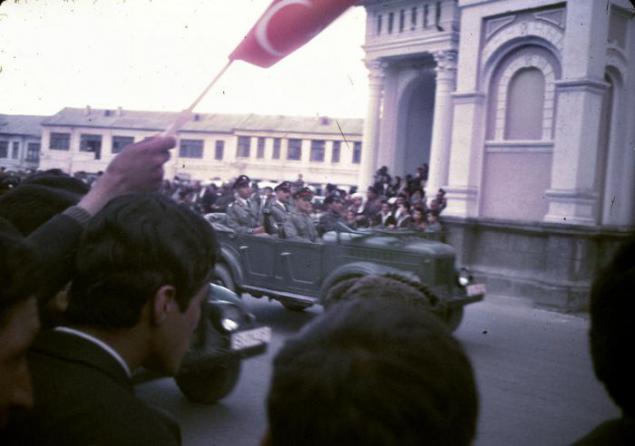
Military Band (helmets do not remind?)
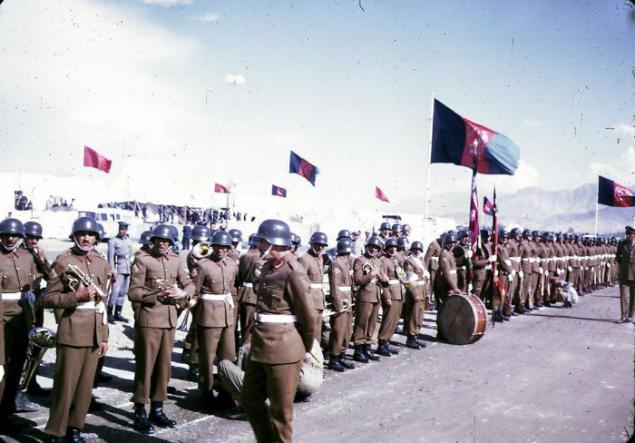
Celebrating New Year

Mosque to the west of the mausoleum of King Abdul Rahman - currently Zarnigar park in the center of Kabul - which was built by King Habibullah, son of King Abdul Rahman. The building is currently used as a storeroom for the Department for Protection of Monuments of the Ministry of Culture.
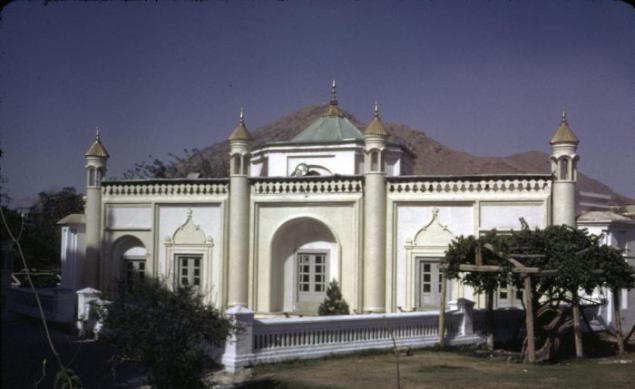
Students in class at the Higher Teachers College, where Dr. Podlish taught for two years.
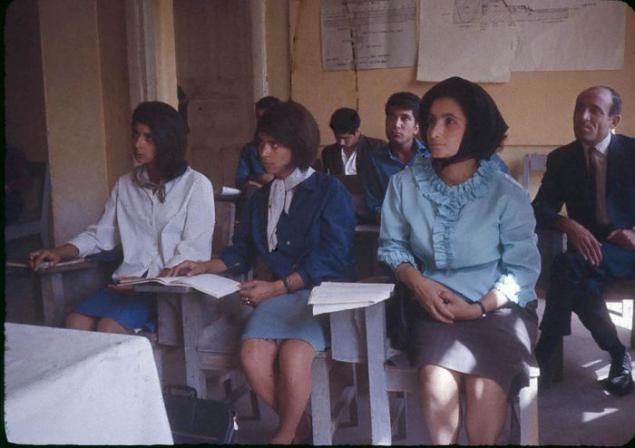
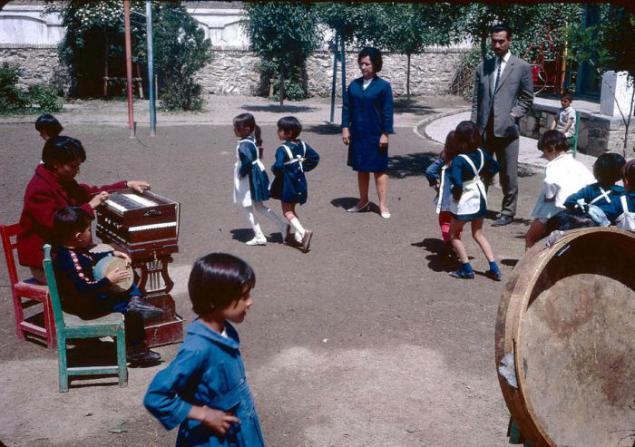
Senior English class at the American International School of Kabul. Peg Podlich sits on the left. "His last year I graduated at the American International School of Kabul. In Tempe, I had to walk four blocks to the school. In Kabul, a school bus stops right outside our house. The bus behind us Indian ladies dressed in saris. In addition we were on the bus for about 20 children. "-Peg Podlish

Ian Podlish chooses clothes at the market in Istalif. Yang in a short dress and veiled zhenzhina right. "We arrived in Kabul on a sunny morning in June. Dad met us and ran through customs. I am very tired, but I remember how was impressed when he saw a dark-blue, green and purple ghosts, who walked along the side of the road. The Pope explained that under these chadors hiding women and that some women have to wear them when you exit the community. We never called burka clothes ... Depending on the country in which the veil is practiced, women may wear clothes of different styles, and it is called in different ways. "- Peg Podlish
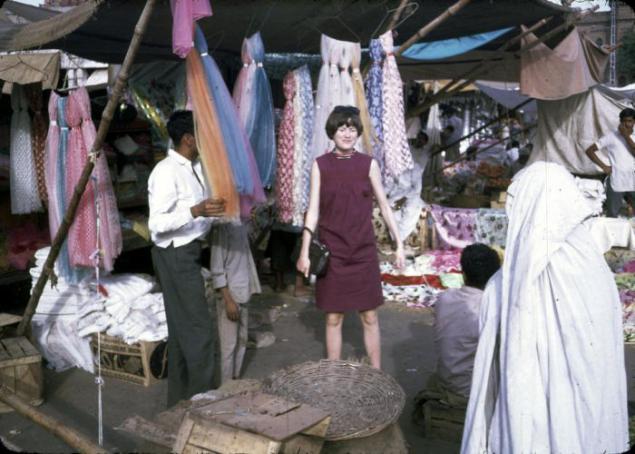
Boy and cakes
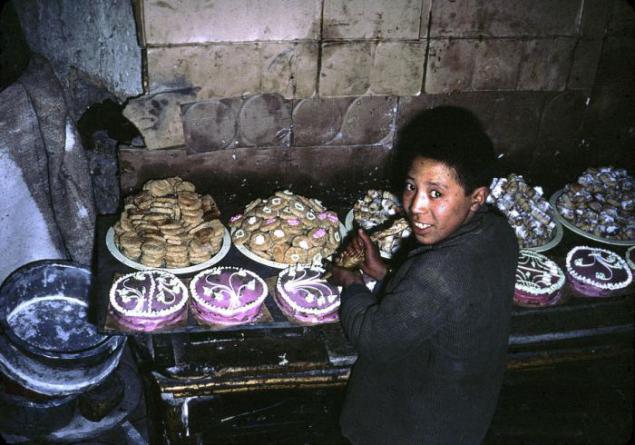
Barbecue
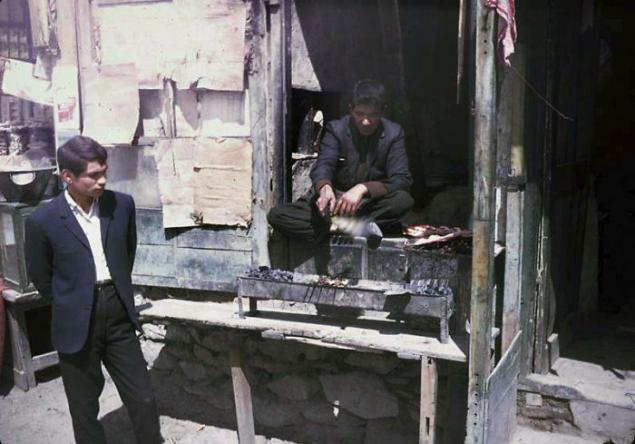
Bathing and washing in the river Kabul
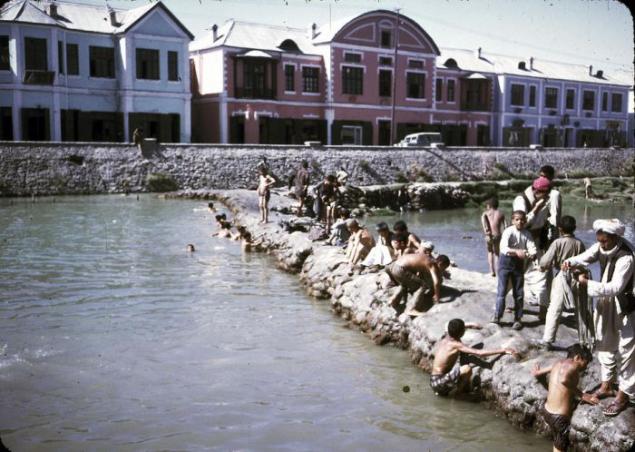
Men sit under a tree near the Istalif, about 30 km north-west of Kabul. The village is the center of the centuries-old pottery and contained a host of tourist attractions. It was practically destroyed during the fighting between the Northern Alliance and the Taliban in the late 1990s.
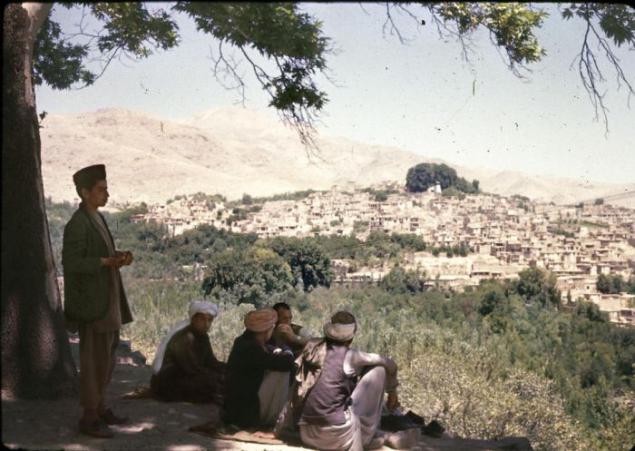
Statue of Buddha in the Bamiyan Valley. Location is a UNESCO World Heritage Site. The two largest statues, including this one, were destroyed by the Taliban in 2001. "It was bumpy and long trip, but I will never forget the wide green valley and the two Buddha statues carved into the rock. It was a truly magnificent spectacle, even for people like me who do not know anything about the history and significance of these statues. "- Peg Podlish
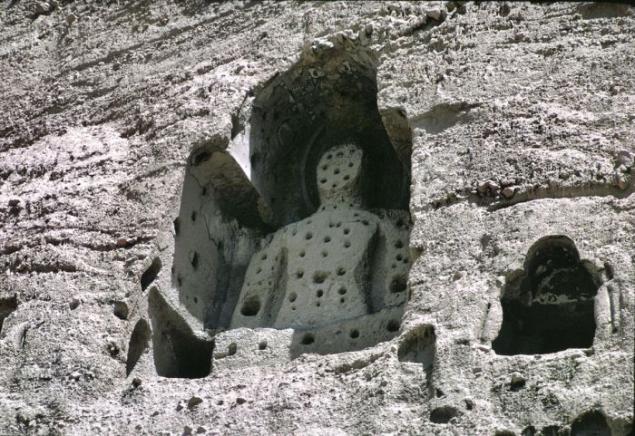
Dr. William Podlish goes down the hill in Kabul. "My father was a professor of elementary education and taught social sciences at Arizona State University in Tempe from 1949 until his retirement in 1981. He has always said that, as he fought in World War II, I would like to fight for the cause of peace. In 1967 he was hired by UNESCO as an expert on the principles of education, and worked for two years at the Higher Pedagogical College in Kabul. Throughout his adult life, since he was interested in sociology, whenever during the journey, whether it's Mexico or Arizona, he took pictures. In Afghanistan, he made many color photographs, and I even think that he was carrying a small camera Olympus. »- Peg Podlish
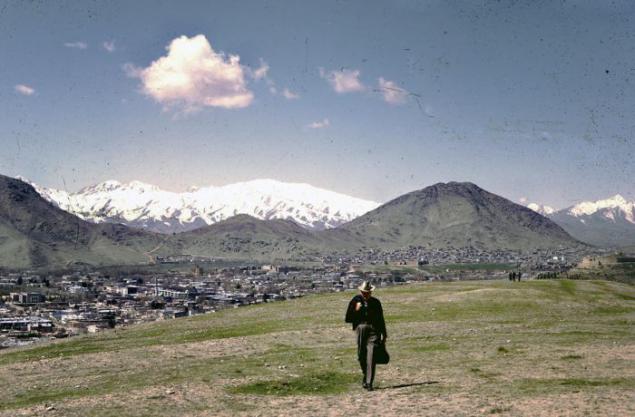

«I grew up in Thimphu, Arizona, and when he offered me and my younger sister Yan to go with him and his mother in Afghanistan, I was very glad of this opportunity. I wanted to spend the last year of high school in some exotic country, but not TIMP ... of course, a lot of cultural differences between Afghanistan and Arizona, but it was very entertaining and interesting. People have always seemed friendly and welcoming. "- Peg Podlish (on the top of the photo - on the right)
Roads in the gorge between Kabul and Jalalabad

"In the spring of 1968 my family traveled to intercity buses through the Khyber Pass in Pakistan (Peshawar and Lahore). The road was very bumpy. As I recall, there were a few harrowing moments of a steep slope on one side, and the overhanging cliffs on the other. Before we left Kabul, my father paid the money to the young man, to bless our bus and take away the evil eye. I think it worked - we had a safe trip. "- Peg Podlish

Peg Podlish in the foreground wearing sunglasses during a family trip to Pakistan

Guard duty at the royal palace in Kabul

Afghan girls on the way home from school. "Afghan girls as boys enrolled in secondary school. Although they wore uniforms, girls were not allowed to wear the chador (veil) on the way to school. Capable girls continued to college as well as men. "- Peg Podlish

Gas station

The tunnel "Salang" built by Soviet specialists in the years 1958-64 through the Salang Pass in the Hindu Kush - a link between the northern and southern Afghanistan. The length of the tunnel 2.67 km, the width of the carriageway 6m. Altitude 3400m. During the Afghan war, there were two cases of mass death of Soviet troops in the tunnel. 23 February 1980 16 people were poisoned by exhaust fumes during a stop of the column due to an accident. Another even bigger tragedy occurred November 3, 1982, when a tanker explosion killed more than 176 people. In 1997 he was blown up on orders from Ahmad Shah Massoud, to prevent the advancement of the Taliban in the north. Restored in 2002

Jan and Peg Podlish in the gardens of Paghman, which were destroyed during the war before the US invasion of Afghanistan in 2001.

Royal Hill in the gardens of Paghman. "If you look at photos of the destroyed Europe after the Second World War, and compare them with what you see now, or with pre-war times, it can feel something like that, looking at these pictures Afghanistan 1960s. Then Afghanistan was the land of the world. You will see it and its inhabitants as they have been and could be. It is important to realize that we have more in common with people from neighboring countries than what divides us. "- Peg Podlish

Young Afghans

Town hillside in Kabul. "During a year in Kabul, we lived in Shari-Nau. In the 1940s, my parents lived in Denver, Colorado. My mother said that Kabul is a bit like her Denver: Located at an altitude of about a mile, sunny weather, beautiful mountains. I reminded Kabul Arizona arid landscape and lack of rain. Since I was born in Arizona, it was very easy to get used to the harsh beauty of the landscape of Afghanistan. "- Peg Podlish

A group of young Afghans drinking tea with music

Traffic jam

The Afghans and Americans

Government motorcade

An Afghan man prepares dessert Dzhelabi

Afghan children

Chemistry lesson at school

Parking near the American International School in Kabul. "Schools no longer exists, but its graduates remain in touch through Facebook and meet once a few years in various US cities. The next meeting will be held in Boston this year. Last time school let out his disciples in 1979, before she had a 20-year history. The school was located on the same site, which is now the American University of Afghanistan - in the Darul Aman Rd in the west of Kabul. In 1967-68 the American International School enrollment of about 250 students. "- Peg Podlish

Masjid-e-Shah in Kabul to Shamshir.

Road repair

A military parade in Kabul

Military Band (helmets do not remind?)

Celebrating New Year

Mosque to the west of the mausoleum of King Abdul Rahman - currently Zarnigar park in the center of Kabul - which was built by King Habibullah, son of King Abdul Rahman. The building is currently used as a storeroom for the Department for Protection of Monuments of the Ministry of Culture.

Students in class at the Higher Teachers College, where Dr. Podlish taught for two years.


Senior English class at the American International School of Kabul. Peg Podlich sits on the left. "His last year I graduated at the American International School of Kabul. In Tempe, I had to walk four blocks to the school. In Kabul, a school bus stops right outside our house. The bus behind us Indian ladies dressed in saris. In addition we were on the bus for about 20 children. "-Peg Podlish

Ian Podlish chooses clothes at the market in Istalif. Yang in a short dress and veiled zhenzhina right. "We arrived in Kabul on a sunny morning in June. Dad met us and ran through customs. I am very tired, but I remember how was impressed when he saw a dark-blue, green and purple ghosts, who walked along the side of the road. The Pope explained that under these chadors hiding women and that some women have to wear them when you exit the community. We never called burka clothes ... Depending on the country in which the veil is practiced, women may wear clothes of different styles, and it is called in different ways. "- Peg Podlish

Boy and cakes

Barbecue

Bathing and washing in the river Kabul

Men sit under a tree near the Istalif, about 30 km north-west of Kabul. The village is the center of the centuries-old pottery and contained a host of tourist attractions. It was practically destroyed during the fighting between the Northern Alliance and the Taliban in the late 1990s.

Statue of Buddha in the Bamiyan Valley. Location is a UNESCO World Heritage Site. The two largest statues, including this one, were destroyed by the Taliban in 2001. "It was bumpy and long trip, but I will never forget the wide green valley and the two Buddha statues carved into the rock. It was a truly magnificent spectacle, even for people like me who do not know anything about the history and significance of these statues. "- Peg Podlish

Dr. William Podlish goes down the hill in Kabul. "My father was a professor of elementary education and taught social sciences at Arizona State University in Tempe from 1949 until his retirement in 1981. He has always said that, as he fought in World War II, I would like to fight for the cause of peace. In 1967 he was hired by UNESCO as an expert on the principles of education, and worked for two years at the Higher Pedagogical College in Kabul. Throughout his adult life, since he was interested in sociology, whenever during the journey, whether it's Mexico or Arizona, he took pictures. In Afghanistan, he made many color photographs, and I even think that he was carrying a small camera Olympus. »- Peg Podlish

